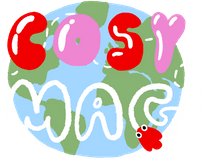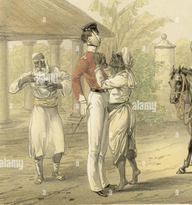Pop culture stems from its accessibility to everyone, regardless of the class that one belongs to. Thus, the discourse on whether or not certain trends are meant for older teenagers is contradictory in nature.
Though it can be difficult for one to keep up with the times and social media plays a large part in ageing us or making us feel older than we should due to its fast-paced nature, I do believe that pop culture is for all. Further, the topic of Disney's love for creating live-action remakes leads to new audiences enjoying things pop-culture related with a more diversified lens.
But what is pop culture?
According to the sociological definition of pop culture, it refers to cultural products like music, art or film that are consumed by the majority of a society’s population. It is certain types of media that are highly accessible and appealing to the masses.
Pop culture arose as a result of the creation of the middle class during the Industrial Revolution, as people who were starting to move towards a more urban lifestyle wanted to create their own culture that separates them from their past. For example, there was a rise in music halls and organized sports events in the 19th century. It allowed for a connection between the audience and performers and included ritual participation, essentially cheering for the team or joining in song.
Before industrialism, people’s lives were based on the seasons and they had to look forward to certain occasions like Christmas to have a way to celebrate or get together.
Industrialism created a system where life was removed from seasonal patterns and brought in strict disciplines of time. The rise of pop culture meant that this system would break down as people could act on their own self-interest rather than waiting for certain celebrations that meant communal enjoyment.
Charles Dickens is a great way to learn more about this, as he loved to document the lives of the middle-class during this time and was supportive of the movement towards leisure.

Mass media led to cultural and social changes, thus, the meaning of pop culture also differed as it began to merge with ideas of consumerism and mass consumption. There are six definitions of pop culture according to John Storey, a British media specialist.
Firstly, popular culture is simply a culture that is widely favoured and thus, there are no negative connotations. In regards to the argument at hand, pop culture should not have any age restrictions as its main purpose is to entertain an audience.
Secondly, pop culture is anything that isn’t “high culture” by definition – pop culture is inferior and marks status and class.
Thirdly, it can be defined as commercial objects produced for mass consumption. It is a tool used by the higher class to suppress or take advantage of the masses.
The fourth definition is that pop culture is negotiated as it can be altered depending on the dominant and subordinate clauses.
The fifth definition is that in the postmodern world, the distinction between ‘authentic’ and ‘commercial’ is blurred as users can use manufactured content, alter it or reject it entirely.
The last definition is that pop culture is also folk culture and something that arises from the people. Therefore, it is more authentic rather than commercial trends that are pushed upon you.
An example that comes to mind when talking about the last two definitions is the discourse around Olivia Rodrigo’s target audience and why it appeals to the older generation of Gen Z or Millennials.
Many of us have regressed into our childhood selves over quarantine and Rodrigo’s music speaks to that. Her music reminds us of early Demi Lovato, Selena Gomez and the Scene, and even Paramore.
In an article published by Vogue Magazine, written by Emma Specter, she explains that as a 27-year-old woman, she “feels free blasting good 4 u with her car windows down”. She loved Sour because it “revolves around the anxiety and ecstasy of new love”, especially since she did not come out of the closet until later in life. She was not able to experience breakups and first kisses and so the album gives her the chance of reliving her teen years.

The Role of Nostalgia in Pop Culture
Nostalgia plays a role in what we enjoy watching or listening to. It is defined as the recollection of fond memory, influencing individuals to look back at memories through a rose-tinted sense of positivity (Hepper et al., 2012).
The Nostalgia Effect is a cognitive bias that states that feeling of nostalgia or sentimentality leads us to a place of increased social connectedness. It can play a role in the way we spend money; nostalgia and reminiscing on our past weaken our desire to hold onto our money and thus we buy more products.
Lasaleta, Sedikides & Vohs (2014) found that there is a link between nostalgia, social connectedness and the desire for money. They asked participants to view print ad copies that featured nostalgic experiences from the past or neutral ones that were focused on making new memories.
The willingness to pay for the products was tested by showing the participants a booklet of product options, then measuring their willingness to pay for each one. The results concluded that participants who viewed the nostalgia-inducing ad copy were likely to pay more for the products.
This phenomenon is exemplified by arguably the most hated group of millennials on the Internet right now – Disney Adults. According to Urban Dictionary, it is defined as “a millennial adult, with or without kids, that can’t stop talking about Disney, including the movies and the parks".
Even if they do have kids, they’re still way more obsessed with it than their kids ever would be. They probably engage in casual “DisneyBounding” and visit the theme parks at least once a year. They are obsessed with everything Disney and probably have a Mickey Mouse bumper sticker and/or tattoo.”

DisneyBounding is an activity coined by Leslie Kay wherein adults wear outfits inspired by their favorite characters. There is not a lot of information about the beginnings of the term "Disney Adults", and the definition of the term itself. But essentially, they tend to spend more than average amounts of money and time obsessing over all things Disney.
It is also important to note that I am referring to Disney Adults and not adult-who-likes-Disney, which has a large difference; the former do things like buying a house at Golden Oak, a community of homes in Walt Disney World Resort, whereas the latter may visit one of the themed parks every few years and get excited over it, and maybe buy a themed t-shirt or a pair of mouse ears if the time calls for it.
Kurtis Conner made a video going in-depth about the concept of Disney Adults which I found entertaining (as I do all his videos). Personally, I don’t think Disney Adults are bad, or at least they are the lesser of many evils. They may go a bit too extreme like buying a Disney themed house but I’m sure there are worse ways to spend your money. The Internet loves to villainize people unnecessarily, but that is a conversation for another time.
Disney & Live-Action Remakes
Speaking of Disney, the newly emerged trend of reinvention also paves the way for old and new fans to come together and enjoy something that plays an essential part in the understanding of pop culture.
Live-action remakes have been taking the Disney name to the top. With 14 of them already out and nine coming out within the next five years, this train is not stopping anytime soon. Despite the criticism that these films have received on social media, these films have received $9,356,559,664 at the box office worldwide from 1996, with the release of 101 Dalmatians, to the 2021 Disney+ release of Cruella.
One of the largest aforementioned criticisms that these films get is the classification of realistic CGI into the category of live-action. Some movies like Aladdin (2019) are correctly classified as this as only the animals were the CGI elements, however, films like The Lion King (2019) and The Jungle Book (2016) barely have non-human actors.
Both were directed by Jon Favreau, and it was revealed that the former only has one scene of live-action footage. Further, The Lion King (2019) was classified under the Best Animated Feature in the Golden Globes.

Live-actions have always been a topic of discussion that is difficult to look at objectively because of the nostalgic factors, also these films are so successful. For example, parents can enjoy these as they are familiar with these stories from their childhood and their children can also fall in love and create their own attachments to these worlds.
According to the audience score at Rotten Tomatoes, the live-action films have received over 80% in ratings. Some of them include The Jungle Book (2016), The Beauty and the Beast (2017), Christopher Robin (2018), Aladdin (2019), and Cruella (2021). Though these films might not be appealing to some, they are still an important aspect of life to many.
Disney has always relied on old children’s stories to romanticize and monetize off of. The story of The Little Mermaid was originally created by Hans Christian Andersen (1805-1875). Andersen is a Danish author best known for his fairy-tales, which till this day is still the basis for Disney’s films. For example, Frozen (2013) was actually inspired by his story The Snow Queen, published in 1844.
His writing style, direct and succinct, was able to create imaginative worlds that were at times dark and scary as a mirror of the real world. This was in response to the romanticism that was ever-present in that era of literature. The talent he had is what makes his legacy so important to remember.
Disney’s ability to reimagine stories in ways that are new and exciting is a major reason why we still love these tales. Reimagining stories nowadays has changed from simply tweaking the story to creating a more diverse casting.

Remakes Influencing Pop Culture
This change in history is monumental and started with the casting of Halle Bailey for the lead role of Ariel for the live-action remake. Expectedly, there was a lot of controversy with this. Bailey is an actress, singer-songwriter who is known for being half of the duo, Chloe x Halle. There were a lot of racist comments with the #NotMyAriel hashtag trending on Twitter.
However, there were a lot more positive responses to this news with many being excited for her to take the big screen in such an iconic role. I, for one, am stoked just thinking about the little girls who will be able to feel represented and look up to someone who looks like them. I didn’t have that growing up; as an Indian woman, my only “representation” was Princess Jasmine despite the films treating Middle-Eastern and Asian cultures as a monolith through the eyes of Orientalism.
In more recent news, Rachel Zegler was announced to play the titular role of Snow White in the live-action remake. Zegler is an American actress, singer and YouTuber with a Columbian background. She is also starring as Maria, in the highly awaited film, West Side Story (2021), directed by Steven Spielberg and is a ‘key role’ in the sequel of Shazam! (2019), titled Shazam! Fury of the Gods (2023).
She has already made a name of herself in Hollywood at just 20 years old and there is no question why. Her incredible voice enamours you from the second you hear it, which is also why her video singing “Shallow” from A Star is Born (2018) went trending on Twitter with now over 10 million views.

There is a lot of discourse on whether these casting decisions were a ploy for tokenism which I would say is not. Disney has made many strides, especially in their animation movies. It just makes sense that this pattern of diversity will trickle down into their live-action remakes as well.
Disney’s animated movies have been increasingly more diverse in comparison to those of the past eras. It can be seen that after the release of Aladdin in 1992, having diverse main characters have become less of a novelty and more so normalized.
Today, we have characters like Pocahontas, Mulan, Tiana, and Moana who have played a large part in children’s lives. With streaming services like Disney+, there have been more opportunities for shows with a diverse cast. For example, the show Mira, Royal Detective premiered in 2020 showcases an Indian-American female lead that is inspired by Indian culture and customs. It is known to be the first South Asian protagonist in a Disney Junior show, and hopefully not the last.

Furthermore, Disney as a company has made changes like having new diversity and inclusion policies for cast members, introduced in 2019. The policies allow for cast members to have more freedom in expressing themselves through “gender-inclusive hairstyles, jewellery, nail styles, costume choices and, appropriate visible tattoos”.
Doing so lets guests see themselves reflected in these characters, stories, etc. It is claimed that they took suggestions from cast members all over the world to create these policies.
Disingenuous Attempts at Diversity
Though there are many companies at the moment who have been attempting to rebrand after being criticized for their lack of diversity - one of them being Victoria’s Secret - it can definitely seem like it is being done as a cash grab and not because they understand the significance of their actions which for decades have contributed to unrealistic beauty standards.
Since the major controversy in 2019, Victoria’s Secret has undergone a complete 180 and launched Body by Victoria, a Spring 2020 campaign that featured models of all shapes, sizes, colors, and ages. Valentina Sampaio became the first transgender model to be featured.

The difference between Disney and Victoria’s Secret in their journey to become more diverse is consistency. Disney had their awareness over 20 years ago and has since made tons of changes.
Though they aren’t perfect, I do think their constant work over the years has made their new decisions, in regards to casting actresses of different ethnicities, less of a cash-grab and more of an expectation. However, Victoria’s Secret rebranding came seemingly out of nowhere and as an attempt to save face.
I think the changes made by them are the bare minimum and should have been done years ago. Their ignorance is what pushed people away and I think it will take a lot more work to get their popularity back, especially when brands like Savage X Fenty, which is owned by Rihanna, exists with a goal to embrace individuality and support people to live their lives unapologetically.
Overall, do I think pop culture is for all? Absolutely. Globalization and technology have changed the way cultural material is spread from culture to culture. The ability for me, as a 20-year-old living in India to even know about Olivia Rodrigo or Kurtis Conner, is revolutionary and something we take for granted.
Social media has allowed us to be exposed to a wide variety of media and that accessibility should not be limited to other people’s critique of what is or isn’t age-appropriate. Further, consumers can now speak to producers of media directly and can be producers themselves, thus, changing the meaning of pop culture entirely.
The diversity that pop culture is now having is also inspiring for many across the globe. Creating diversity in media has been the goal for many brands and for some like Disney, they have done a great job in doing so for decades. It is incredible seeing talented young women like Bailey and Zegler take the big screen and be at the forefront of this new era of reimagined classics.















